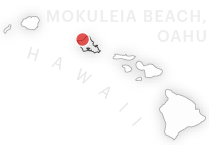Hawaii’s Beaches Are Disappearing
by Ash Ngu, ProPublica, and Sophie Cocke, Honolulu Star-Advertiser, December 29, 2020.
ProPublica is a nonprofit newsroom that investigates abuses of power. Sign up to receive our biggest stories as soon as they’re published.
This article was produced in partnership with the Honolulu Star-Advertiser, which is a member of the ProPublica Local Reporting Network.
Hawaii’s beaches are owned by the public, and the government is required to preserve them. So years ago, officials adopted a “no tolerance” policy toward new seawalls, which scientists say are the primary cause of coastal erosion.
But over the past two decades, oceanfront property owners across the state have used an array of loopholes in state and county laws to get around that policy, armoring their own properties at the expense of the environment and public shoreline access.
Government officials have granted more than 230 environmental exemptions to owners of homes, hotels and condos, according to records compiled by the Honolulu Star-Advertiser and ProPublica. Those exemptions have allowed property owners to keep old seawalls in place, build new ones and install mounds of emergency sandbags along the beaches.
Explore the last 20 years of shoreline exemptions in Hawaii →
Officials defend their actions, saying that forcing property owners to comply with anti-armoring laws would cause them too much hardship, particularly along coastlines that already have lots of seawalls.
Over time, though, waves hitting the barriers pull the sand away from the shore and carry it out to sea. As a result, the government approvals have fueled beach loss and perpetuated the redevelopment of private properties along treasured and environmentally sensitive coastlines — all at a time when scientists have been warning of the dire need to push development inland.
About the Data
The data was compiled from public records requests filed with Hawaii’s Department of Land and Natural Resources and the City and County of Honolulu’s Department of Planning and Permitting. The records include state approvals for seawall easements and emergency sandbags, as well as county approvals for new or illegally constructed seawalls. The documents cover approvals issued between 2000 and 2020.
Records on seawall easements were compiled from individual paper files archived at the DLNR, as well as annual government reports filed with the Hawaii Legislature. The data for emergency permits was derived from paper files at the DLNR. The City and County of Honolulu, as well as the counties of Maui and Kauai, provided files for shoreline setback variances requested by private property owners seeking approvals for shoreline hardening structures.
A handful of properties with a known exemption in the past two decades could not be linked up to an address from source documents and were not marked on the map.
The data is available on the ProPublica Data Store.
Sources
Archival photos from City and County of Honolulu, 2020, historical Lanikai shorelines from The Coastal Geology Group at the University of Hawai‘i, building footprints, lidar and street data from the Hawaii Office of Planning.
Drone imagery by Darryl Oumi for Honolulu Star-Advertiser
Ash Ngu is a journalist, designer and developer with ProPublica's news apps team.
Sophie Cocke is a reporter with the Honolulu Star-Advertiser. She has covered government and politics in Hawaii for the past decade. Please get in touch at [email protected] if you have information you want to share about seawalls or other shoreline hardening structures.
































